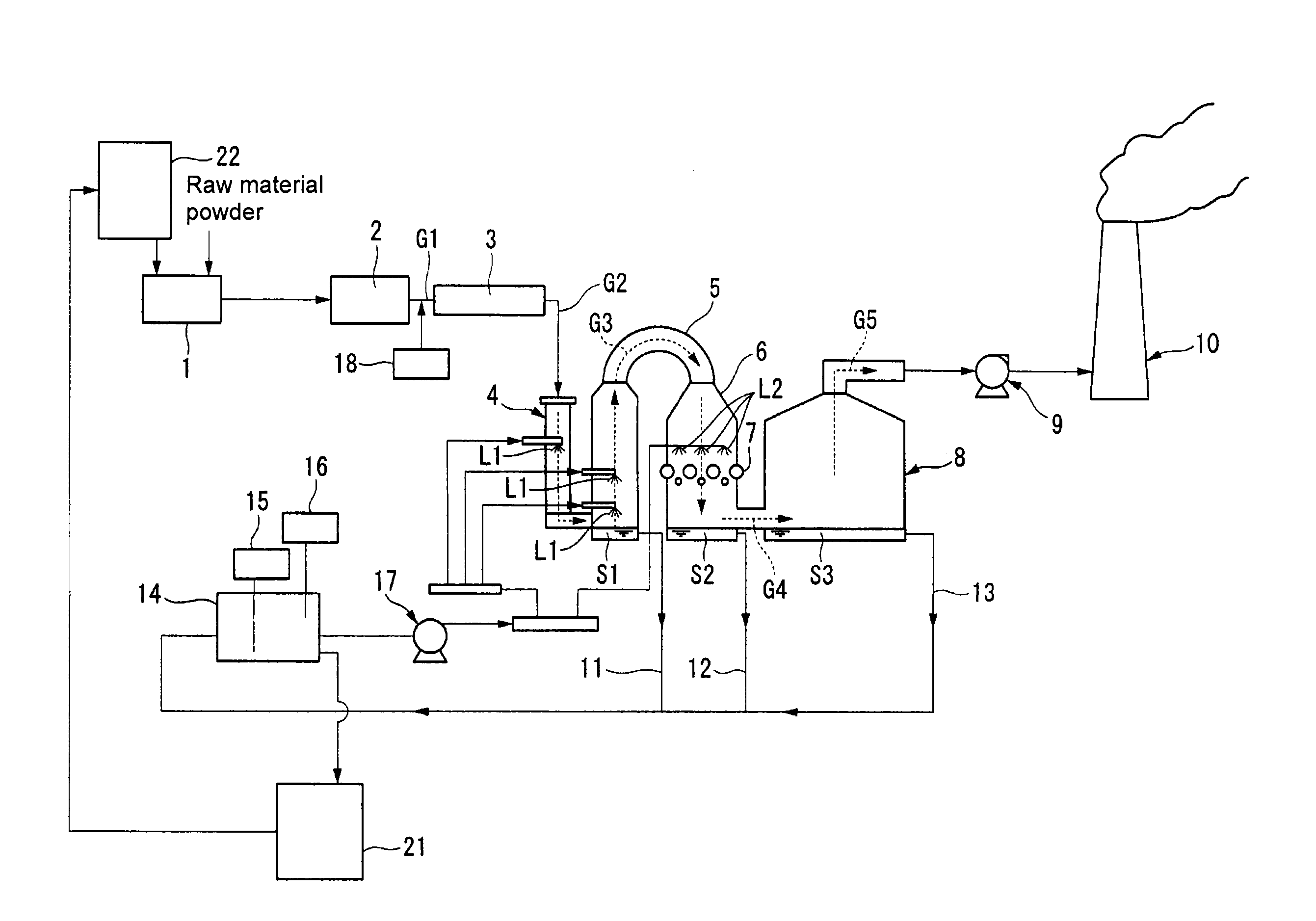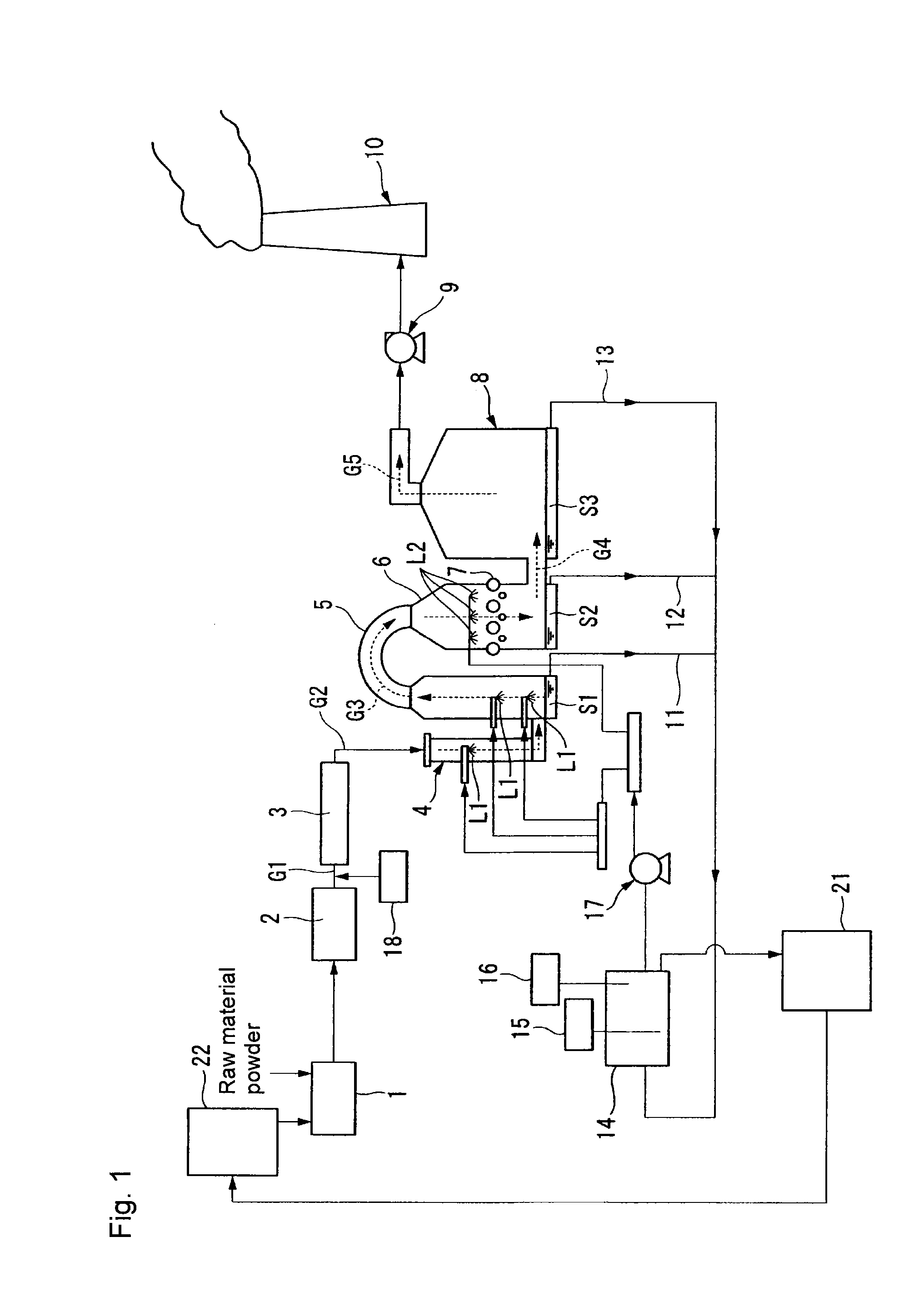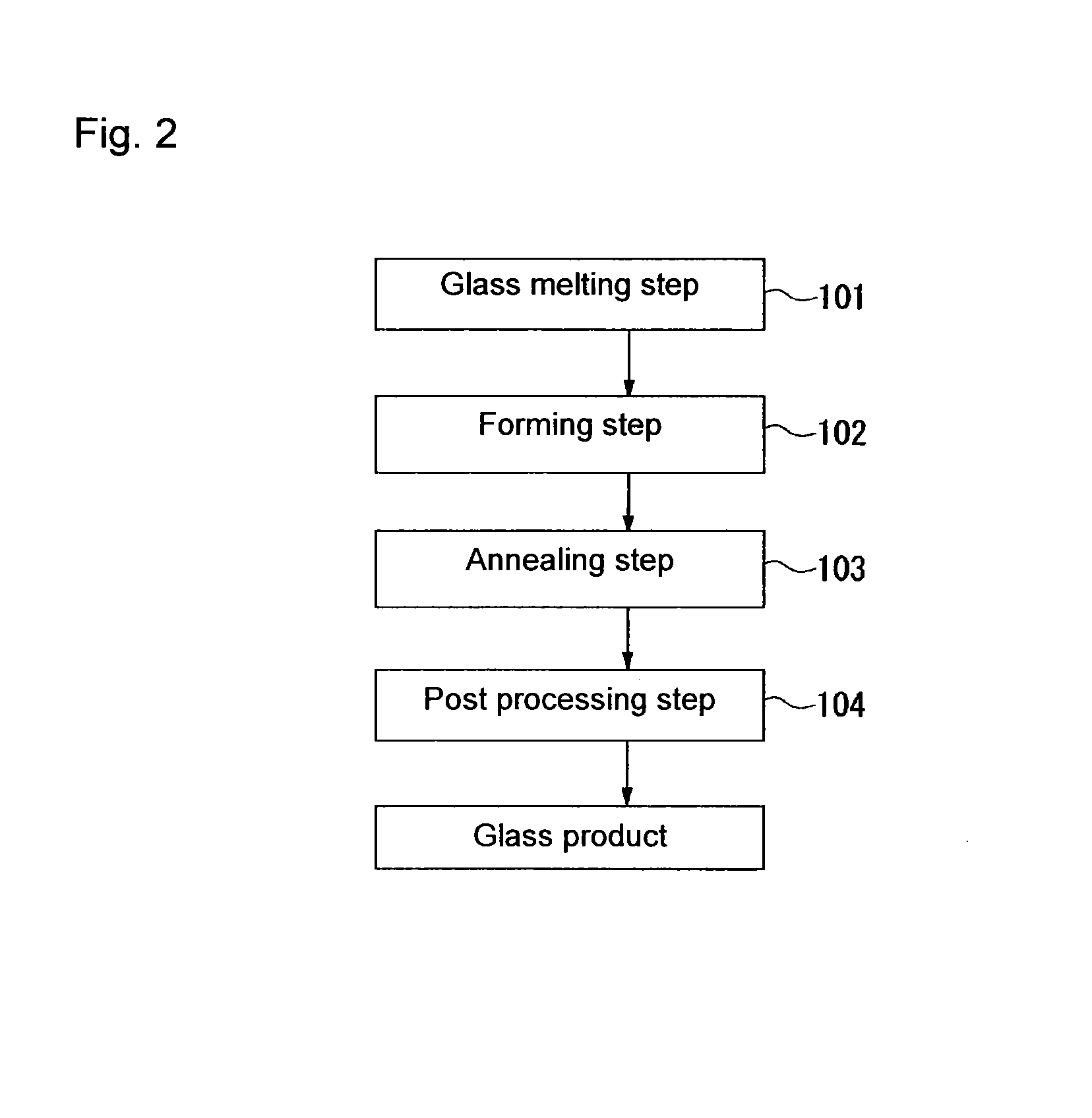Process for producing granules, method for producing molten glass and method for producing glass product
a technology of molten glass and granules, which is applied in the direction of glass tempering apparatus, glass pressing apparatus, glass forming apparatus, etc., can solve the problems of presenting adverse environmental influences, and achieve the effect of reducing the amount of raw materials to be used and reducing production costs
- Summary
- Abstract
- Description
- Claims
- Application Information
AI Technical Summary
Benefits of technology
Problems solved by technology
Method used
Image
Examples
example 1
[0138]Using an apparatus having the construction as shown in FIG. 1, molten glass having the following glass composition was produced under the following conditions. However, the glass raw material put into the melting furnace was not granules produced by the granulation device, and a raw material powder separately prepared so that the desired glass composition was obtainable, was used. The concentrations of the respective components (exhaust gas composition) in the exhaust gas G2 immediately before being supplied to the cooling tower 4 were as shown in Table 1.
[0139]In this Example, no calcium hydroxide-supplying means 18 was provided before the bag filter 3.
[Glass Composition (Represented by Mol % Based on Oxides)]
[0140]SiO2: 66.0%, Al2O3: 11.4%, B2O3: 7.7%, MgO: 5.3%, CaO: 4.5% and SrO: 5.1%
[Production Conditions]
[0141]Amount of exhaust gas G1 generated from the melting furnace: about 500 Nm3 / h.
[0142]Temperature of exhaust gas G2 immediately before being supplied to the cooling t...
example 2
[0154]In this Example, an exhaust gas was used in which the contents of the respective components in exhaust gas G2 were larger than in Example 1. The concentrations of the respective components in exhaust gas G2 immediately before being supplied to the cooling tower 4 in this Example, are shown in Table 1.
[0155]Otherwise, measurements and evaluations with respect to the respective items in Table 1 were carried out in the same manner as in Example 1. The results are shown in Table 1.
examples 3 to 5
[0156]Measurements and evaluations with respect to the respective items in Table 1 were carried out in the same manner as in Example 1 except that the pH change range of the liquid in the treated liquid tank 14 was changed as shown in Table 1. The results are shown in Table 1.
[0157]Further, in Example 5, a precipitate and turbidity of the liquid in the treated liquid tank 14 were substantial, and therefore, the liquid was subjected to solid-liquid separation to obtain a liquid which was reused as a contacting liquid.
PUM
| Property | Measurement | Unit |
|---|---|---|
| temperature | aaaaa | aaaaa |
| temperature | aaaaa | aaaaa |
| temperature | aaaaa | aaaaa |
Abstract
Description
Claims
Application Information
 Login to View More
Login to View More - R&D
- Intellectual Property
- Life Sciences
- Materials
- Tech Scout
- Unparalleled Data Quality
- Higher Quality Content
- 60% Fewer Hallucinations
Browse by: Latest US Patents, China's latest patents, Technical Efficacy Thesaurus, Application Domain, Technology Topic, Popular Technical Reports.
© 2025 PatSnap. All rights reserved.Legal|Privacy policy|Modern Slavery Act Transparency Statement|Sitemap|About US| Contact US: help@patsnap.com



